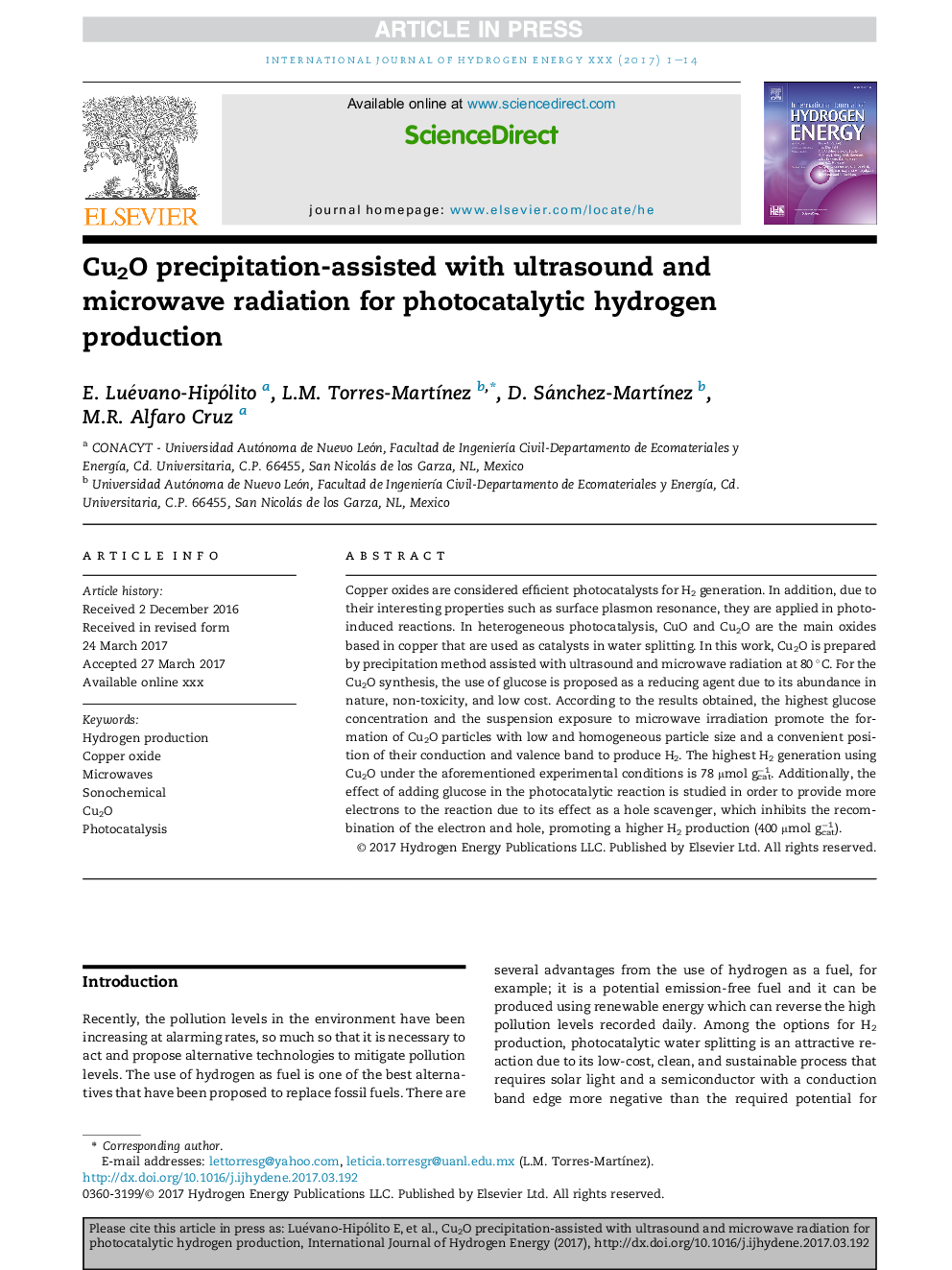| Article ID | Journal | Published Year | Pages | File Type |
|---|---|---|---|---|
| 5147489 | International Journal of Hydrogen Energy | 2017 | 14 Pages |
Abstract
Copper oxides are considered efficient photocatalysts for H2 generation. In addition, due to their interesting properties such as surface plasmon resonance, they are applied in photo-induced reactions. In heterogeneous photocatalysis, CuO and Cu2O are the main oxides based in copper that are used as catalysts in water splitting. In this work, Cu2O is prepared by precipitation method assisted with ultrasound and microwave radiation at 80 °C. For the Cu2O synthesis, the use of glucose is proposed as a reducing agent due to its abundance in nature, non-toxicity, and low cost. According to the results obtained, the highest glucose concentration and the suspension exposure to microwave irradiation promote the formation of Cu2O particles with low and homogeneous particle size and a convenient position of their conduction and valence band to produce H2. The highest H2 generation using Cu2O under the aforementioned experimental conditions is 78 μmol gcatâ1. Additionally, the effect of adding glucose in the photocatalytic reaction is studied in order to provide more electrons to the reaction due to its effect as a hole scavenger, which inhibits the recombination of the electron and hole, promoting a higher H2 production (400 μmol gcatâ1).
Related Topics
Physical Sciences and Engineering
Chemistry
Electrochemistry
Authors
E. Luévano-Hipólito, L.M. Torres-MartÃnez, D. Sánchez-MartÃnez, M.R. Alfaro Cruz,
